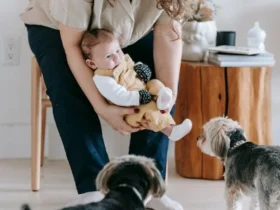Bringing a dog into your life is a significant commitment that requires careful consideration and preparation. While dogs can bring immense joy and companionship, they also come with responsibilities that can be overwhelming if you’re not fully prepared. Before you take the plunge into dog ownership, it’s essential to evaluate whether you’re truly ready for the demands and responsibilities of having a canine companion. Here are eight signs that might indicate you’re not ready for a dog and what you can do to address these concerns.
1. Inconsistent Schedule
The Importance of Routine
Dogs thrive on routine and consistency. They need regular feeding, exercise, and bathroom breaks, which requires a stable daily schedule.
Signs of an Inconsistent Schedule
- Frequent Changes: If your daily schedule changes often due to work, travel, or other commitments, it can be challenging to provide the stability a dog needs.
- Unpredictable Hours: Irregular work hours or frequent late nights may not align well with a dog’s needs for consistency.
What You Can Do
- Assess Your Routine: Consider whether you can establish a consistent routine for feeding, exercise, and training.
- Plan Ahead: If your schedule is unpredictable, think about how you can manage or mitigate these changes, such as hiring a dog walker or pet sitter.
2. Limited Financial Resources
The Cost of Dog Ownership
Owning a dog involves various expenses beyond the initial adoption or purchase fee, including food, veterinary care, grooming, and other supplies.
Signs of Financial Constraints
- Unstable Income: If your income is irregular or you’re struggling with debt, it may be challenging to cover ongoing costs for a dog.
- Lack of Emergency Funds: Having insufficient savings for unexpected veterinary bills or emergencies can put your dog’s well-being at risk.
What You Can Do
- Create a Budget: Develop a budget that includes all potential expenses associated with dog ownership.
- Build an Emergency Fund: Ensure you have savings set aside for unexpected costs before committing to a dog.
3. Lack of Space
The Need for Space
Different dog breeds have varying space requirements, and providing an appropriate living environment is crucial for their well-being.
Signs of Insufficient Space
- Small Living Area: If you live in a small apartment without access to outdoor space, certain breeds may struggle with confinement and lack of exercise.
- No Yard or Nearby Park: Dogs benefit from access to outdoor areas where they can exercise and explore.
What You Can Do
- Evaluate Your Living Situation: Consider whether your living space can accommodate a dog’s needs, including room to move and access to outdoor areas.
- Consider Dog Size and Breed: Research breeds that are more suitable for smaller living spaces if you’re in a cramped environment.
4. Inadequate Time for Training and Socialization
The Role of Training and Socialization
Training and socialization are critical for a dog’s development and behavior. They require time and effort to ensure a well-adjusted and obedient pet.
Signs of Insufficient Time
- Busy Schedule: If your schedule is packed with work, family commitments, or other activities, you may not have enough time for training and socializing a dog.
- Lack of Availability: Frequent travel or long hours away from home can impede your ability to train and socialize your dog effectively.
What You Can Do
- Assess Your Availability: Determine whether you can commit to the time needed for training and socialization.
- Plan for Training: Consider enrolling in dog training classes or seeking help from professional trainers if needed.
5. Unstable Living Situation
The Need for Stability
Dogs need a stable and secure environment to feel comfortable and thrive. Frequent moves or changes in living arrangements can be stressful for dogs.
Signs of Instability
- Frequent Relocations: If you move often or have plans to relocate soon, it can disrupt your dog’s sense of security and routine.
- Uncertain Future: Uncertainty about your long-term living situation can affect your ability to provide a stable home for a dog.
What You Can Do
- Secure Your Housing Situation: Ensure that your living situation is stable and that you can commit to providing a long-term home for a dog.
- Plan for the Future: Consider your future plans and how they may impact your ability to keep a dog.
6. Allergies or Health Concerns
Managing Health Issues
Allergies or health concerns can affect your ability to care for a dog or the dog’s ability to live comfortably in your home.
Signs of Potential Health Issues
- Pet Allergies: If you or a family member has allergies to pet dander, it can make living with a dog challenging.
- Health Conditions: Certain health conditions may limit your ability to manage the physical demands of dog ownership.
What You Can Do
- Consult with a Doctor: Talk to your doctor about managing allergies or health concerns before getting a dog.
- Explore Alternatives: Consider hypoallergenic breeds or discuss other options with your healthcare provider.
7. Lack of Experience with Dogs
The Need for Knowledge and Experience
Experience with dogs can significantly impact your ability to provide proper care and address behavioral issues.
Signs of Limited Experience
- First-Time Owner: If you’ve never owned a dog before and lack knowledge about dog care, training, and behavior, you may find it challenging to meet a dog’s needs.
- Unfamiliar with Breeds: Not knowing about different breeds and their specific needs can lead to mismatched expectations and challenges.
What You Can Do
- Educate Yourself: Learn about dog care, training, and different breeds before committing to dog ownership.
- Seek Guidance: Consider talking to experienced dog owners or seeking advice from dog trainers and behaviorists.
8. Unwillingness to Commit to Long-Term Care
The Lifelong Commitment
Dogs live for many years, and committing to their care involves a long-term dedication that includes their health, well-being, and companionship.
Signs of Unwillingness
- Short-Term Plans: If you’re only interested in having a dog for a short period or are not prepared for a long-term commitment, you may not be ready for dog ownership.
- Lack of Understanding: Not fully understanding the responsibilities of dog ownership can lead to a lack of commitment.
What You Can Do
- Reflect on Your Commitment: Consider whether you are ready for the long-term responsibility of caring for a dog.
- Prepare for the Future: Understand the lifelong needs of a dog and ensure you’re ready to provide consistent care throughout their life.
Conclusion
Owning a dog is a significant responsibility that requires careful consideration and preparation. By recognizing the signs that you might not be ready for a dog, you can make informed decisions and ensure that you are fully prepared for the challenges and rewards of dog ownership. If you find that you’re not yet ready, consider addressing these concerns and preparing yourself for the future. Ultimately, responsible dog ownership starts with understanding the needs of your future furry friend and committing to their well-being and happiness.











Leave a Reply